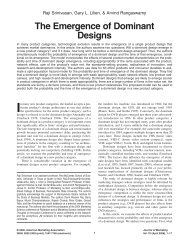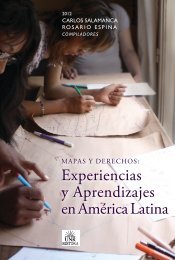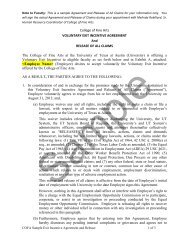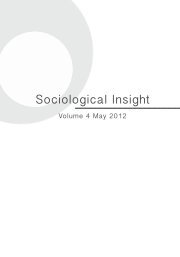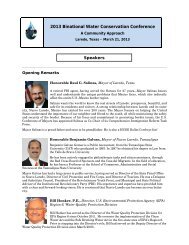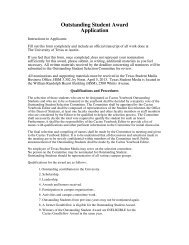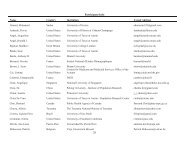Invited Talks: Transition Metal Oxides - University Blog Service - The ...
Invited Talks: Transition Metal Oxides - University Blog Service - The ...
Invited Talks: Transition Metal Oxides - University Blog Service - The ...
You also want an ePaper? Increase the reach of your titles
YUMPU automatically turns print PDFs into web optimized ePapers that Google loves.
<strong>The</strong> John B. Goodenough Symposium in Materials Science & Engineering –<br />
In Honor of His 90 th Birthday<br />
<strong>The</strong> <strong>University</strong> of Texas at Austin, Austin, Texas<br />
October 26-27, 2012<br />
Covalency influence on crystal chemistry of some inorganic compounds with<br />
octahedral-site cations<br />
Y. Shirako 1<br />
1 Department of Chemistry, Gakushuin <strong>University</strong>, 1-5-1, Mejiro, Toshima-ku, Tokyo, 171-8588, Japan<br />
Abstract Body in Space Below:<br />
(Please use single space, Times New Roman or similar font, size 12, and limit to 250 Words. Please DO NOT exceed the space<br />
below.)<br />
<strong>The</strong> purpose of this presentation is to explain the local structures which is a network of octahedral<br />
ionic clusters in inorganic compounds using a modification of the methods to predict a shape of severalatomic<br />
molecules [1], and then to restrict the adopted inorganic crystal structure of each composition. This<br />
way is a qualitative rule and yet easily available. In particular, the improved method may be effective to<br />
classify pressure-induced structural phase transition sequences of various compounds.<br />
In the covalency-dominant small molecules such as CO 2 and NH 3 , shape of the molecule depends on<br />
number of electrons in valence shell orbitals of molecule (Walsh’s rule) [1]. Essence of the rule is<br />
delocalization of the lone-pair electrons. <strong>The</strong> author extends the Walsh’s rule to be able to apply to<br />
inorganic crystal structures with frameworks of the octahedra. <strong>The</strong> modified rule can be called “extended<br />
Walsh’s rule”. In the extended rule, number of electrons in outer shell orbitals can be used as a qualitative<br />
parameter to relate stability of the inorganic crystal structures with those compositions. For example, all<br />
M-X-M angles in post-perovskite compounds AMX 3 are more bent to 90 º than those in the perovskite<br />
which is less dense than the post-perovskite. <strong>The</strong> extended Walsh’s rule suggests that, if all 4-electrons on<br />
p orbitals of closed-shell X can be delocalized to t 2g orbitals on M’s, linear M-X-M fragments are stable,<br />
or else bent M-X-M fragments are stable since the electrons can be delocalized through e g orbitals on M’s.<br />
<strong>The</strong>refore, the M-X-M fragments in which the M ions have at least one of d orbitals with inability of<br />
formation of -bond (filled orbitals), unlike Ti 4+ , Nb 4+ and Re 4+ , are expected to be bent by covalent<br />
effect. Actually, post-perovskite compounds containing the -bond ability cations such as Ti 4+ and Zr 4+ in<br />
octahedral-sites are almost not reported.<br />
<strong>The</strong> previous articles have been reported on the similar topic [2, 3, 4]. Goodenough and Kafalas (1973)<br />
[2] described discussion about contribution of covalency, electrostatic energy, and ionic size for crystal







